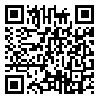BibTeX | RIS | EndNote | Medlars | ProCite | Reference Manager | RefWorks
Send citation to:
URL: http://tumj.tums.ac.ir/article-1-222-en.html
Normal
0
false
false
false
EN-US
X-NONE
AR-SA
MicrosoftInternetExplorer4
Background: Anthropometric facial analysis and quantitative measurements are useful methods
for diagnosis, as well as planning in plastic surgery. The literature is
replete with numerous related studies, few of which are about the Iranian
population. This study was conducted to determine the average facial
proportions of Iranians and compare it with that of Caucasians.
Methods: This cross-sectional study was conducted on a convenient sample of 212
Iranians (male=108, female=104)
aged 18-30 years who did not have any previous major
facial surgery or trauma and their past two generations were Iranian.
Measurements between facial landmarks were determined and compared with
Caucasians with Student and one sample t-tests (P<0.05, 95%
CI).
Results: The intercanthal (en-en) and eye widths (ex-en/R),
forehead height 2 (tr-n), trichion-endocanthion
(tr-en) and nasofacial and nasofrontal angles were not significantly different between
the participating men and women but other facial measurements were
significantly different (Р<0.05).
The head (ft-ft), eye (ex-en/R/L) and nose widths
(al-al) and upper face height (n-sto), nasofrontal angle and nasal tip
protrusion in the study population were not significantly different from
Caucasians. The upper lip (sn-sto), lower face (sn-gn) and forehead heights
(tr-n) and nasofacial angle of the female participants were not significantly
different from Caucasian women but other facial measurements were significantly
different (Р<0.05).
Conclusion: Most
facial anthropometric measurements of Iranian subjects were significantly different
from those of Caucasians. More precise studies with larger sample sizes are
warranted to reach a common conclusion on the facial anthropometric similarities
or differences between the two populations.
| Rights and permissions | |
 |
This work is licensed under a Creative Commons Attribution-NonCommercial 4.0 International License. |





